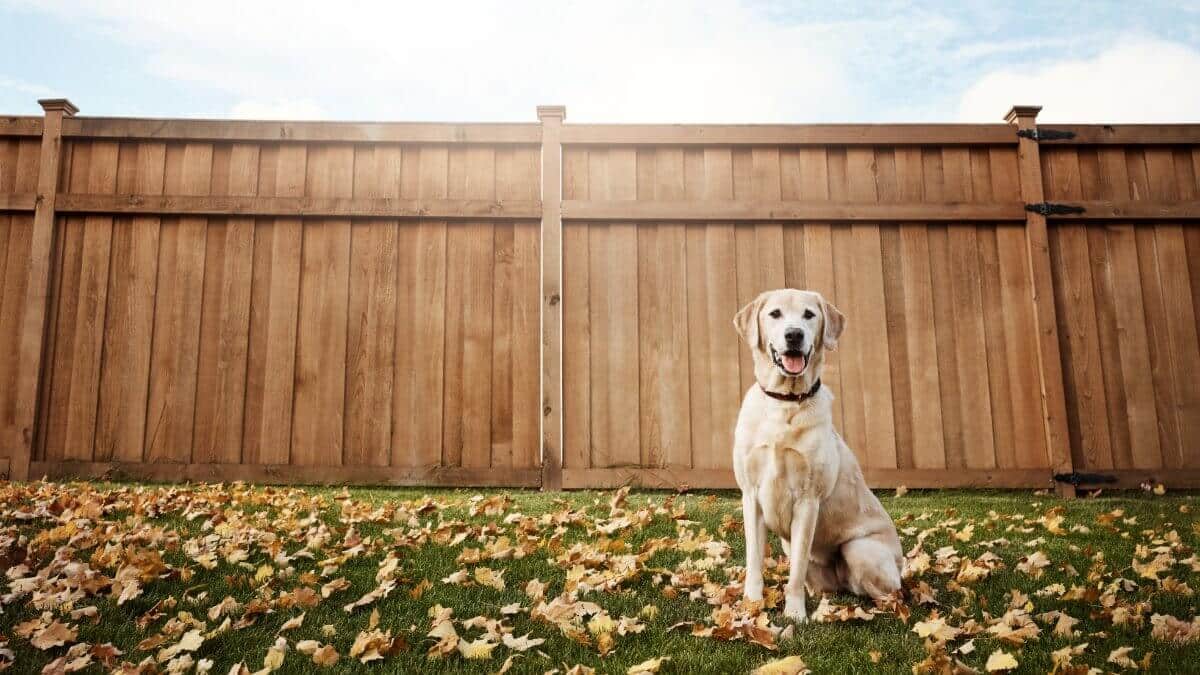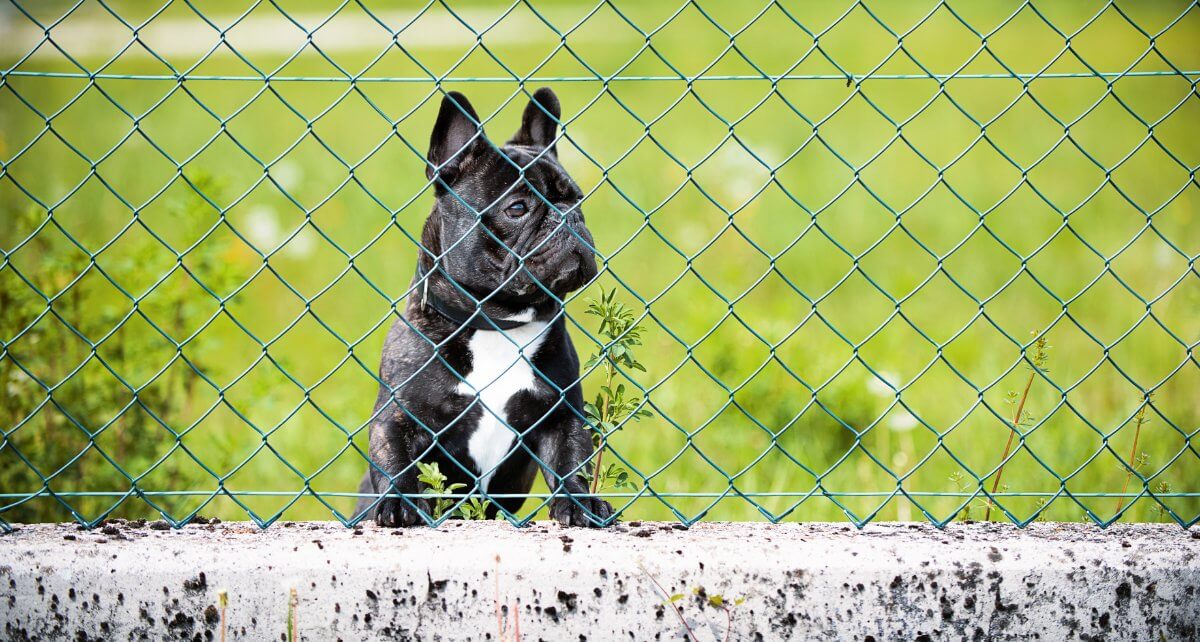
Home » The Real Deal on Dog Fences: What Works, What Doesn’t, and Why It Matters

When you bring a dog into your life, you’re also making a promise: to keep them safe. One of the most practical ways to uphold that promise is with a fence, if you have property that can support one. But choosing the right kind of fence isn’t always straightforward. From wood to wire, vinyl to virtual, the options are vast—and the pros and cons can vary wildly depending on your dog, your land, and your lifestyle.
Some fences are designed for beauty, while others are designed for budget. We believe function should be your primary consideration. And then there are those fence systems that are downright baffling when it comes to real-world effectiveness. Let’s break down the options—and why all fences are not created equal.
A wooden fence may be the gold standard for many homeowners. Tall, solid, and timeless, these fences offer more than just containment. They also shield your dog from visual distractions, like the neighbor’s kitty or a rogue squirrel darting across their yard.
Wood’s strength lies in its simplicity. A six-foot board-on-board fence creates a visual and physical barrier, reducing barking and reactivity in dogs that are sensitive to movement. But it’s not without maintenance headaches. Wood can warp, rot, or splinter over time, especially if left untreated. And for dogs with a taste for chewing or digging, the base of a wooden fence can become a target.

Chain-link fencing may not win any design awards, but it’s practical, durable, and relatively inexpensive. It allows visibility and airflow, which can be a perk in hot climates, but also a curse for dogs that bark at everything they see.
Chain-link lacks the visual barrier some reactive pets need. It’s also more industrial-looking, which might clash with carefully landscaped yards. Still, for someone with a large area to enclose on a budget, it’s a solid option.
Vinyl has become a popular alternative to wood, offering the look of a clean, finished fence with far less upkeep. It won’t rot or splinter, and many styles come in solid panels that block both sight and sound—a win for dogs prone to overstimulation.
Of course, all that polish comes at a cost. Vinyl fences are typically more expensive up front, and while they’re strong, extreme temperatures can cause them to crack. Still, for many dog owners, the trade-off is worth it for the combination of form and function.

If you’ve ever admired the clean lines of wrought iron or aluminum fencing, you’re not alone. These fences bring an upscale look to a front yard or patio area. They’re sturdy, rust-resistant, and nearly impossible to climb.
But they’re not ideal for every dog. The bars often have wide gaps that small dogs, or wily puppies, can slip through. And they offer no visual barrier, which could increase barking or anxiety in excitable dogs. They’re better suited to calm, medium-to-large breeds that don’t get too curious about the world beyond the fence.

Popular on larger properties or rural homesteads, split-rail fences lined with wire mesh blend in well with the natural environment. The open structure of the rails maintains an airy, pastoral feel, while the mesh provides the security needed to contain pets.
This type of fencing is especially useful for large spaces where aesthetics matter as much as function. However, the quality of the mesh matters—cheap or loosely installed mesh can fail, especially if your dog is a digger or chewer.
When choosing fence height, trust your knowledge of your breed and your individual dogs—not the fence company’s recommendations. They don’t understand canine behavior the way we do. We’ve all seen small dogs clear four- or five-foot fences, and athletic, larger breeds can make tall barriers seem like hurdles. On the “fence” between two sizes? Bump it up.

Sometimes, it’s not the fence but the dog that needs extra management. For dogs that dig, metal dig guards can be installed at the base to prevent tunneling. Additionally, many seasoned dog owners swear by digging trenches and having fences recessed several inches underground. There are other creative solutions, such as lining the inside of the base of the fence with cement blocks.
For climbers, coyote rollers—spinning bars added to the top of a fence—make scaling nearly impossible.
These enhancements can make the difference between a reliable fence and an escape artist’s playground. They’re often cheaper and more humane than replacing an entire fence system.
Invisible Fences: Convenient? Maybe. Effective? Not Really.
Invisible fences are often marketed as high-tech solutions for containment. Using buried wires or GPS systems, they trigger a collar that beeps or delivers a mild shock when the dog crosses a designated boundary. On paper, it sounds clever. In practice? Not so much.
Invisible fences offer zero protection from external threats. Coyotes, stray dogs, or even humans can easily enter your yard. If a dog becomes frightened or overstimulated, they might charge through the boundary—and be too scared to return. Worse, the psychological toll of shock-based boundaries can increase anxiety or aggression in some dogs.
Let’s be blunt: a system that doesn’t physically stop your dog or keep danger out isn’t much of a fence at all.
For travel, events, or short-term outdoor time, portable fences and exercise pens (X-pens) can be useful. They’re typically lightweight, foldable, and easy to move around. They’re not intended for unsupervised use or containment of strong, energetic dogs, but they have their place.
Ideal for renters or people on the go, these options can help to manage boundaries in a pinch. You will see them in abundance at dog shows, and they come in handy during puppy rearing. Just don’t mistake them for long-term solutions.

There’s no one-size-fits-all answer. The best fence depends on your dog’s size, breed, energy level, and behavior. It also depends on your neighborhood, your climate, your budget, and even your own peace of mind.
What does matter is that your dog is securely contained in a way that honors both their safety and their dignity. That means giving them space to roam without the fear of escape or intrusion. It means investing in solutions that work with their temperament rather than punishing it.
And it means thinking critically about modern conveniences like invisible fences, which may solve a problem on paper but often fall apart in real life.
At the end of the day, a fence should do more than mark territory. It should provide freedom within boundaries and protection without fear. That’s the kind of security every dog deserves—and every dog owner should demand.
